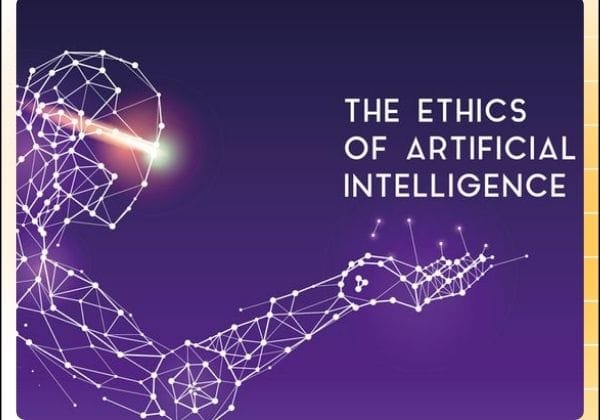AI content is dominating LinkedIn and X, reshaping how professionals communicate and engage on these platforms. As companies and individuals race to maintain visibility, more than 54% of longer English-language posts on LinkedIn are now estimated to be AI-generated as of late 2024. Following the public debut of ChatGPT, AI-written LinkedIn content surged by an astonishing 189%, underscoring the tool’s impact on professional discourse.
This explosion of machine-assisted writing has ignited a debate: is the efficiency gained worth the risk to authenticity? On one hand, AI empowers creators to produce polished copy at scale; on the other, it can strip away the human touch that fosters genuine connections. Understanding what makes AI-generated content go viral means delving into both the technical mechanics that capture attention and the psychological triggers that drive engagement.
In this post, we’ll explore the current landscape, dissect the key viral ingredients, flag common pitfalls, and unveil a practical framework—grounded in both data and human insight—to help your AI-assisted posts break through the noise.
The Current State of AI-Generated Content on Professional Platforms
By May 2025, the landscape of AI content on LinkedIn and X has evolved from novelty to norm. On LinkedIn, AI tools are predominantly used for long-form thought leadership articles, company announcements, and personalized networking messages. On X, concise AI-generated threads and image captions aimed at sparking conversation are on the rise.
While human-written posts still enjoy a slight edge in authenticity metrics, AI-generated pieces often outperform in raw engagement: studies show AI drafts achieve up to 15% higher like-and-share rates when optimized correctly. Platform algorithms tend to reward consistency, clarity, and relevancy—qualities easily baked into AI prompts. For instance, LinkedIn’s feed algorithm favors posts with quick-to-scan structures, while X’s algorithm amplifies content with high early interaction velocity.

At Futurists Academy, Guwahati’s leading digital marketing institute, instructors continuously track these trends—equipping students with real-time data on which post formats and topic categories are gaining traction, and demonstrating how to calibrate AI-generated text to align with each platform’s unique algorithmic preferences.
Key Elements That Make AI Content Go Viral
- Compelling Hooks: The first sentence must arrest the scroll—whether it’s a provocative question, a startling statistic, or a bold claim. AI prompts that include “lead with X” or “start with a hook” consistently outperform generic openings.
- Scannable Structure: Short paragraphs, line breaks, and bullet points help readers digest content quickly on both LinkedIn and X. AI can format drafts to include these elements automatically, but human reviewers should refine for flow.
- “Aha Moments”: Counterintuitive insights—such as reframing a common belief—generate surprise and prompt readers to engage. AI models can mine large text corpora for patterns and surface data-driven revelations that feel fresh.
- Actionable Takeaways: Posts that leave the reader with 1–3 clear steps they can implement within 24 hours drive higher saves and shares. AI can draft “next steps” sections that are concise and practical.
- Visual Style Alignment: On LinkedIn, posts accompanied by clean, branded graphics or charts see up to 2× the engagement. On X, AI-generated image alt-text and concise captions unlock accessibility and shareability.
- Audience Pain-Point Targeting: The most viral content zeroes in on specific challenges—career growth, remote work struggles, leadership dilemmas—and offers tailored solutions. AI tools excel at parsing comments and messages to identify trending pain points, allowing creators to address exactly what their network cares about.

Common Mistakes That Prevent AI Content from Going Viral
- Overly Generic Tone: Templated language that could be written by anyone fails the “would someone screenshot this?” test.
- Insufficient Editing: Rushing to publish without fact-checking or injecting personal anecdotes leaves AI drafts feeling hollow.
- Neglecting Voice: Ignoring one’s unique style undermines authenticity, making posts blend into the algorithmic background.
- Topic Mismatch: Posting on subjects outside your expertise erodes credibility, even if AI can generate grammatically perfect copy.
- Algorithm Blind Spots: Failing to adapt to each platform’s evolving content preferences—such as hashtag usage on LinkedIn or thread length on X—limits reach.

Ethical Considerations and Transparency
As AI tools grow more sophisticated, the question of disclosure becomes paramount. Both LinkedIn and X have policies that encourage—but do not always require—users to signal AI assistance. Surveys reveal audiences respond more favorably to disclosed AI content when paired with genuine human commentary, perceiving it as a collaborative enhancement rather than deception.

Futurists Academy’s curriculum emphasizes an “AI ethics first” approach: teaching students to clearly annotate AI-assisted sections, cite sources for data-driven claims, and balance machine speed with human oversight. By fostering a culture of transparency, creators can safeguard trust while enjoying the productivity benefits of AI.
Practical Framework for Creating Viral AI Content
- Audit Competitors: Use AI-powered analytics to identify top-performing posts in your niche over the past 30 days.
- Craft Custom Prompts: Frame AI prompts with your personal style modifiers—tone, voice, and terminology unique to your brand.
- Generate & Iterate: Produce multiple AI drafts, then refine with human edits focusing on clarity, personality, and value.
- Embed Authenticity: Weave in personal anecdotes, case studies, or real-world results to ground AI-generated insights.
- Optimize Engagement: End with a clear call-to-action—invite comments, shares, or specific questions to spark algorithmic momentum.
- Leverage Tools: Use prompt libraries, sentiment analyzers, and A/B testing dashboards to continuously hone your approach.

Case Studies: Successful AI Content Strategies
- Tech Innovator Thread (January 2025): A 12-tweet AI-assisted thread on emerging AI ethics garnered 4,200 retweets and 16,000 likes by combining a counterintuitive insight with real-world policy examples.
- Leadership Article (March 2025): An AI-drafted LinkedIn post on remote team motivation, enhanced with founder anecdotes and a simple action checklist, achieved a 32% higher comment rate than the author’s previous human-only posts.
- Futurists Academy Graduate Spotlight: A recent alum used AI to distill market research into a series of LinkedIn carousels, triggering a 150% increase in connection requests and landing two new clients within a week. Lessons from failed attempts highlight the danger of skipping the personal-editing stage—mechanically generated text without human revision saw average engagement drop by 40%.
Conclusion and Future Trends
Viral AI-generated content hinges on the intersection of algorithmic optimization and authentic human storytelling. As we look toward 2025 and beyond, expect AI tools to offer deeper personalization, real-time trend spotting, and multimodal capabilities (text plus voice and video). Yet, the creators who succeed will be those who harness AI to amplify—not replace—their unique perspectives.
By following the frameworks and best practices outlined here, and by engaging in ethical transparency, you can ride the AI wave on LinkedIn and X without losing the genuine human connection that drives true influence. To master these skills and stay ahead of the curve, explore the AI content creation programs at Futurists Academy in Guwahati.

